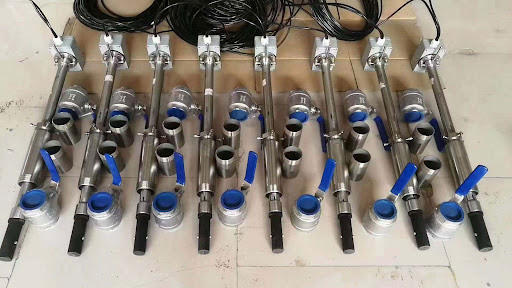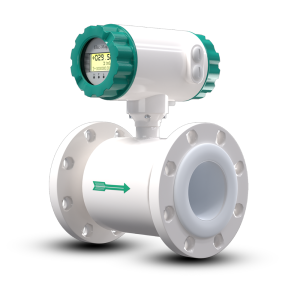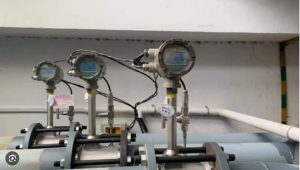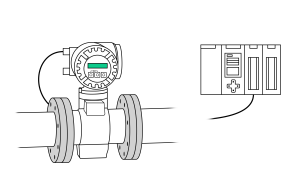In the evolving world of industrial automation and smart metering, Insertion Electromagnetic Flow Meters are fast becoming the go-to solution for fluid measurement across multiple sectors. From water treatment plants and chemical processing units to oil refineries and HVAC systems, these compact yet powerful devices are changing the way engineers and plant managers think about flow monitoring.
But why now? Why is 2025 the ideal year to invest in insertion electromagnetic flow meters?
In this comprehensive guide, we’ll unpack the top five reasons that make this technology a smart and future-proof investment. Whether you’re managing a small facility or overseeing a multinational operation, you’ll see why insertion electromagnetic flow meters should be on your upgrade radar.

1. Cost-Effective Without Compromising Accuracy
Let’s start with the big question on every buyer’s mind: “How much will it cost?”
Insertion electromagnetic flow meters are significantly more affordable than their full-bore counterparts. Because they only require a small opening in the pipe wall for installation, you avoid the hefty material and labor costs typically associated with inline or full-bore flow meters.
But here’s the kicker: you don’t sacrifice accuracy. Most high-quality insertion meters deliver ±1% accuracy, which is more than sufficient for most industrial applications.
Why it matters in 2025:
-
Budgets are tighter across industries.
-
Demand for reliable, budget-friendly solutions is rising.
-
You get high performance at a fraction of the cost.
2. Easy Installation and Minimal Downtime
Installation is often one of the biggest hurdles when it comes to upgrading equipment in operational facilities. Traditional inline meters require shutting down the entire line, draining the system, cutting into the pipeline, and welding or flanging a meter into place.
Insertion electromagnetic flow meters simplify this entirely.
You can install them in live pipelines using hot-tap technology, meaning no need to stop operations. This is especially important for plants that operate 24/7 and can’t afford downtime.
Why this makes sense in 2025:
-
Skilled labor shortages make quick installs more valuable.
-
Companies are prioritizing uptime and process continuity.
-
Faster ROI due to minimized installation costs and time.
3. Scalable for Large Pipe Diameters
If you’re dealing with large-diameter pipes, full-bore flow meters can be prohibitively expensive and logistically difficult to install. Their size and cost scale with the diameter, which means a meter for a 36-inch pipe could cost a fortune.
Insertion electromagnetic flow meters are the ideal solution here.
Since they only penetrate the pipe wall and do not span the full diameter, they remain cost-efficient and manageable even in large systems. One sensor can easily cover pipes ranging from 2 inches to 120 inches in diameter.
Why scalability is key in 2025:
-
Infrastructure upgrades are trending across water, oil, and chemical industries.
-
Large-diameter pipeline networks are expanding, particularly in urban and industrial development zones.
-
Insertion meters allow you to scale up monitoring without scaling up costs.
4. Smart Features and Digital Integration
Modern insertion electromagnetic flow meters aren’t just simple measuring tools — they’re smart devices. With advanced digital outputs, including Modbus, HART, and 4-20mA, they seamlessly integrate into SCADA systems, PLC controllers, and IoT frameworks.
You can now:
-
Monitor flow remotely in real-time.
-
Receive diagnostic alerts before issues cause shutdowns.
-
Integrate with cloud-based data analytics platforms for predictive maintenance.
In short, these meters are built for the Industry 4.0 revolution.
Why this matters in 2025:
-
Industry 4.0 and smart manufacturing are no longer buzzwords—they’re the norm.
-
Companies are investing heavily in automation and remote monitoring.
-
Smart flow meters are no longer a luxury—they’re an expectation.
5. Low Maintenance and Long-Term Reliability
Last but not least: longevity.
Insertion electromagnetic flow meters have no moving parts, which means they are less prone to wear and tear. This makes them ideal for harsh applications involving abrasive, dirty, or corrosive fluids. Maintenance requirements are minimal, and recalibration intervals are extended.
Combine this with rugged stainless steel bodies, IP68-rated electronics, and chemical-resistant electrodes, and you have a solution that’s built to last for decades.
In 2025 and beyond, here’s what that gives you:
-
Lower total cost of ownership.
-
Reduced need for manual checks and service calls.
-
Greater operational efficiency with less human intervention.
Bonus: Ideal for Retrofit Applications
Upgrading older systems with new technology is a delicate process, especially in plants that run continuously or have outdated infrastructure. Insertion electromagnetic flow meters are tailor-made for retrofits. Their installation doesn’t require pipe replacements or system redesigns. You can even install them on vertical or horizontal pipes, regardless of material — plastic, steel, copper, or cement-lined.
Retrofit-friendly means:
-
No expensive redesigns.
-
No significant downtime.
-
Faster modernization at a lower cost.
Frequently Asked Questions (FAQs)
Are insertion electromagnetic flow meters accurate enough for billing or custody transfer?
They are typically not certified for custody transfer applications, which demand ±0.2% accuracy or better. However, they are perfectly suitable for process control, monitoring, and internal usage.
Can I install an insertion flow meter without stopping flow?
Yes, many models support hot-tap installation, meaning you can install the device while the system is running.
Do these meters work for both conductive and non-conductive fluids?
No. Electromagnetic flow meters, including insertion types, only work with conductive fluids (e.g., water, acids, slurries). For non-conductive fluids like oil or gas, you’ll need a different technology (e.g., ultrasonic or Coriolis).
Conclusion
In 2025, efficiency, accuracy, and affordability are the holy trinity of industrial process control—and insertion electromagnetic flow meters deliver on all three fronts.
✅ They’re cost-effective even for large pipes.
✅ They install quickly and without downtime.
✅ They offer smart data integration for future-ready systems.
✅ They require little to no maintenance and last for years.
✅ They’re ideal for scaling up and retrofitting.
If you’re planning to upgrade your flow measurement infrastructure or are building a new facility, choosing an insertion electromagnetic flow meter isn’t just smart — it’s the smartest investment of 2025.
We are a manufacturer of automatic flow meters with many years of experience in the industry. We have strong independent research and development capabilities and are a leader in the flow meter industry. Our main products include electromagnetic flow meters, vortex flow meters, turbine flow meters, ultrasonic flow meters, Coriolis flow meters, various solenoid valves, level meters, control units and valves, etc. Welcome to purchase –Best Instrument





